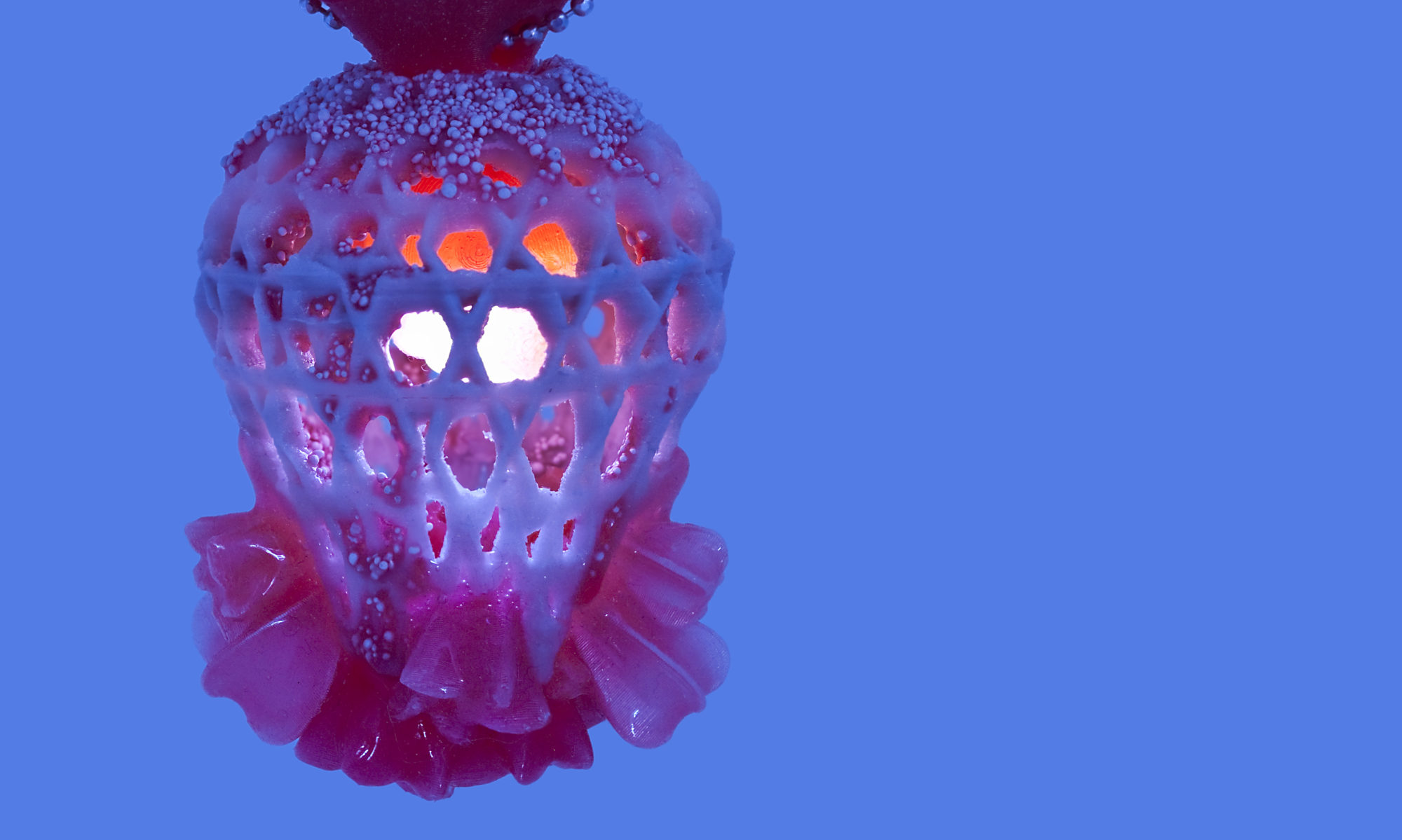Since getting my UMO+ up and running I have been building up to trying out flexible filaments. I was so excited about printing flexible structures for my research that even before getting the printer I had ordered several spools of filament from different sources – without really checking whether it would be compatible with the printer! I thought as long as it was the right diameter (between 2.85mm and 3mm) it would surely work.
WRONG!
I cannot emphasise enough that it is really important to understand the limitations of the different types of 3D printers out there. The Ultimaker is a Bowden-type printer – the filament is pushed into the hotend through a 70-80cm long plastic bowden tube by a material feeder mounted to the back of the printer. In other words, there is a distance of about 80cm between the hotend and the feeder. For printing materials such as PLA and ABS this method works well – the filament is stiff and the force of pushing it translates reasonably rapidly, although I have read somewhere that problems with stringing and oozing on more intricate structures are more likely to occur because of a slight delay with retraction. For flexible filament however, the Bowden-type is probably the least suitable type of printer. The filament itself is already quite flexible, and the feeder squishing it forward through the tube causes a slight delay, meaning a lot of people experience underextraction or – even worse – terrible jams. Oh, and forget about retraction on intricate structures! The way forward here is to adjust the flow rate and printing/travel speed – you want to keep the material coming out of the nozzle as a nice steady ooze and then prevent stringing as much as possible by making the nozzle whizz over the print. There is a great flexible filament comparison thread on the Ultimaker forum, which was my starting point before embarking on my first tests.
Anyway, the first flexible filament I road-tested on my printer was the Ultimaker PLA Flexible-White filament that came as part of my original order. I figured that as an ‘official’ filament by Ultimaker it should cause less potential problems than others. It is quite a bit stiffer than the Recreus FilaFlex I tested afterwards, and this means that retraction settings actually work. Some people on the forum recommended putting some oil on the filament prior to printing, but I really really didn’t want to have to take apart my printer again to clean off residue, so just loaded the filament, ramped up the temperature a bit to 230C on my usual settings and hoped for the best. This is the result:

I am really pleased with the quality of this print – if anything stringing is even less of an issue with the flexible PLA than with normal PLA, making for a cleaner print and less tidying up afterwards. However, I was a bit disappointed at first about the flexibility of the shape – having expected something akin to silicone, this felt more like a very stiff rubber gasket. I looked up the shore hardness of the material and at A 92 it is at the harder end of the spectrum.
So, fired up by my initial success, I decided to try the second filament I had ordered – Recreus FilaFlex, in both black and purple. At a shore hardness of A 84, the filament itself felt a lot softer immediately, and was a bit difficult to thread through the Bowden tube and material feeder. There are very detailed printing instructions on the website (including the disclaimer that this filament is not suitable for Bowden-type printers!) and Recreus even sell their own hotend optimised for this type of filament. There appears to be a specifically formulated Bowden FilaFlex in the pipeline, but here I was with two rolls and a sense of reckless abandon. I considered the oil again but decided against it for above reasons. However, after reading various posts on the forums I decided to turn off retraction, and instead ramp up the flow rate to 150%. This was the result:

The image above shows the cocoon after I had removed the worst stringing, but the result was not bad at all, especially considering the very pleasing squishiness of the material. In terms of feel, this is definitely a lot more like what I was expecting, but there are clearly still issues with oozing and stringing that would need to be addressed. For comparison, here are some purple FilaFlex shapes I photographed prior to cleaning

The middle shape was printed with the retraction turned on – a complete disaster both in terms of stringing and underextrusion. The shape on the right displays the best characteristics, which I achieved by turning up the printing speed to 150 and reducing the flow rate to 130%. These figures still need some fine-tuning, but I was pleased to achieve any type of acceptable results with the FilaFLex at all.
There are still a lot of other flexible filaments to try out there, and these first results are very promising. For my purpose, the Ultimaker Flexible PLA is probably more suitable, but the FilaFlex might be interesting for some more experimental work.
